As I perused Ikebana International, San Francisco Chapter’s recent Ikebana Exhibition, I tried to guess the schools to which the different compositions belonged. I can’t say I had much success, but I had fun looking for patterns among the displays.
Tuesday I posted photos of Sogetsu ikebana – below are images Ikenobo, Ohara, Aratame, Wafu, Enshu and Chiko ikebana. School characterizations are from the Ikebana International, San Francisco Chapter.
Ikenobo School is known as the “Origin of Ikebana” and has strong traditions in training artists. Students learn techniques for various styles, both traditional and modern. Japanese history and philosophical views of nature and plants living in harmony and reflected in Ikenobo ikebana.

Ikenobo
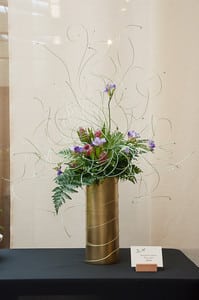
Ikenobo
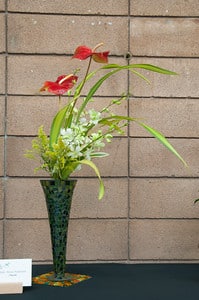
Ikenobo
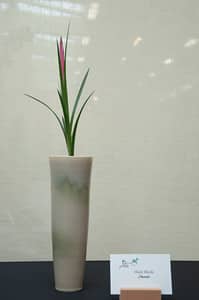
Ikenobo
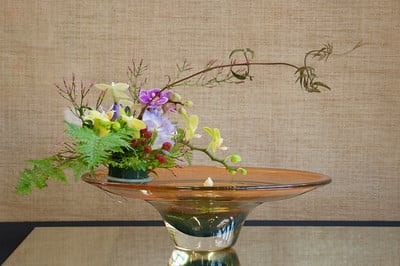
Ikenobo
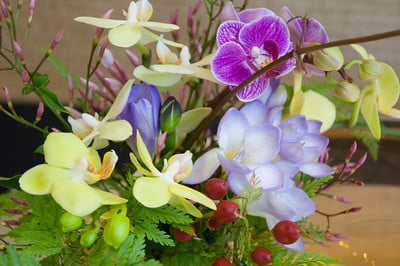
Close-up
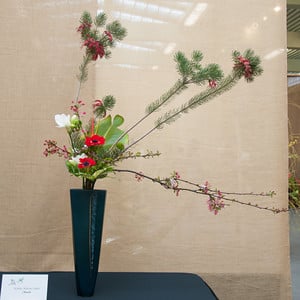
Ikenobo
Ranging from historic interpretations to state of the art innovation, Ohara School focuses great attention on nature and the changing seasons. Harmony of materials with containers and the setting in which the display is placed are considered as the work is created.
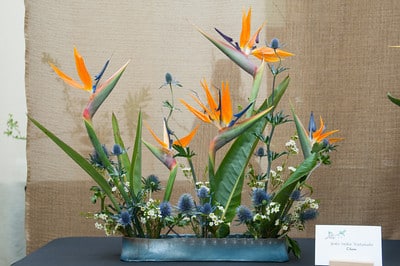
Ohara – bird of paradise
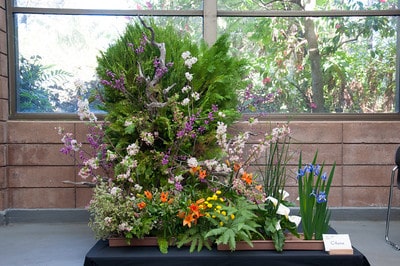
Ohara
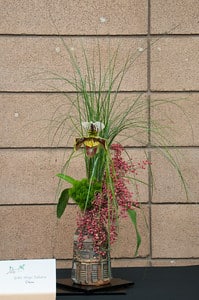
Ohara – orchid
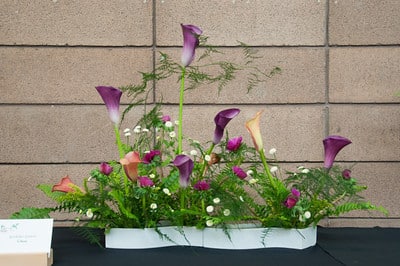
Ohara – calla
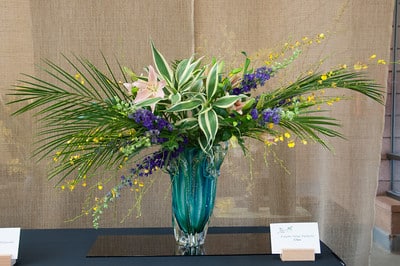
Ohara
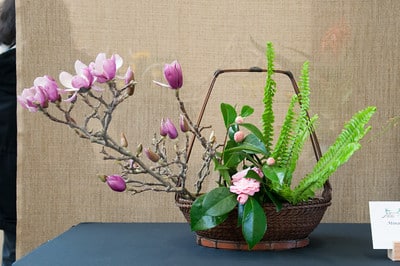
Ohara – magnolia, camelia and fern
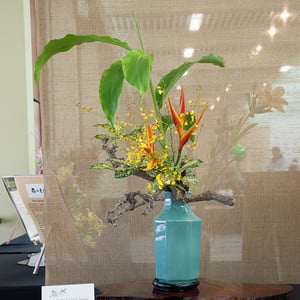
Ohara
One of the newest schools of ikebana among thousands, Aratame School emphasizes contemporary styles, presentations, and striking modern design. Students first study basic ikebana techniques and as their skill evolves, gradually attain great freedom of expression in arranging.
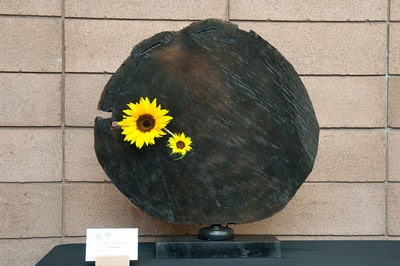
Aratame
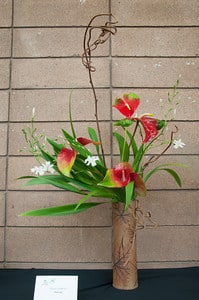
Aratame
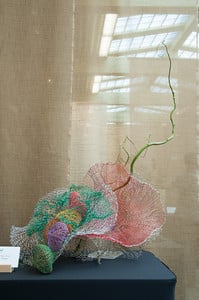
Aratame
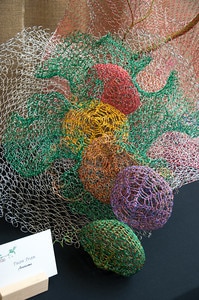
Close-up
Wafu School emphasizes the natural beauty and abundance of flowers and plants used in their natural state. The school offers several levels of study from beginner through teacher. Arrangers strive for harmony between their work and the environment in which ikebana is viewed.
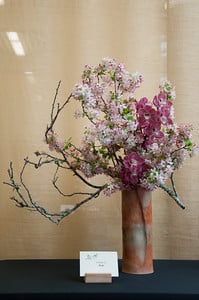
Wafu – orchid and crabapple
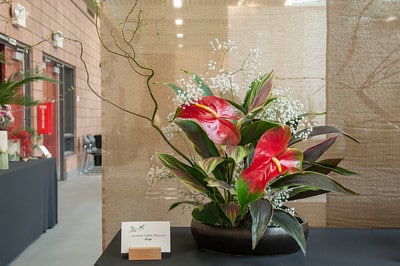
Wafu
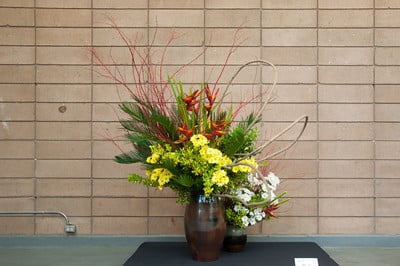
Wafu
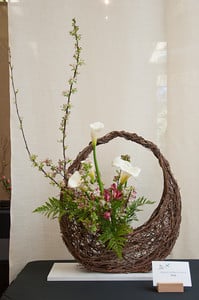
Wafu
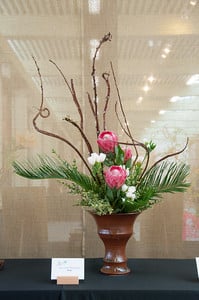
Wafu
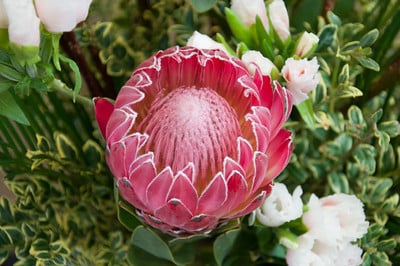
Close-up
Enshu School is an ancient school founded in Japan’s Imperial Court in the late 1400s. The arrangements feature elegantly curving lines. These require students to have extensive training in somewhat difficult technique. The containers used also are works of art, often elaborate vessels of bronze.
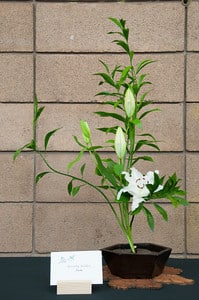
Enshu
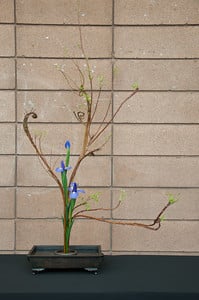
Enshu
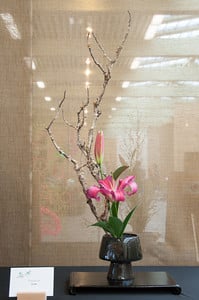
Enshu
Chiko School is famous for displays of flowers arranged with decorative ornaments and figurines. This results in arrangements which often resemble paintings. Bases of various materials such as mirrors are used and pebbles and sand drawings representing water are also featured.
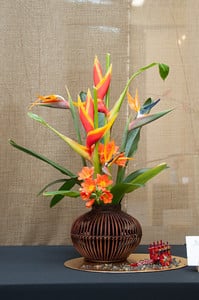
Chiko
In a separate room, visitors could find a large sales area and live demonstrations of the art. Here are some of the vases for sale.
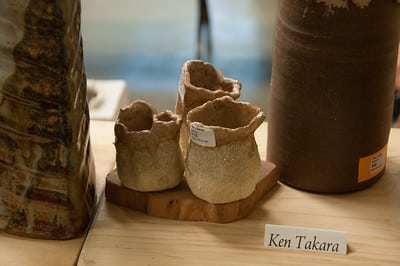
Tan vases
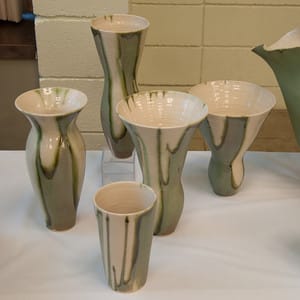
Green and white vases
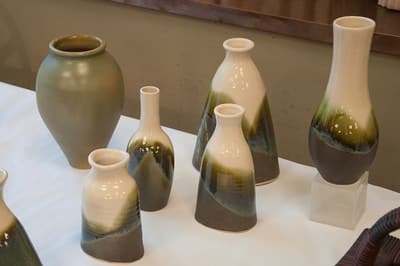
Green and white vases
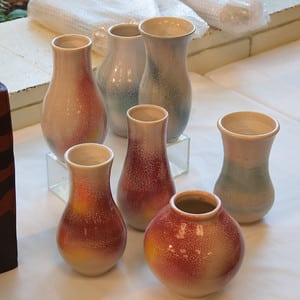
Red vases and blue vases
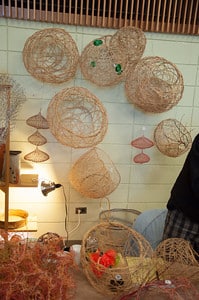
Baskets
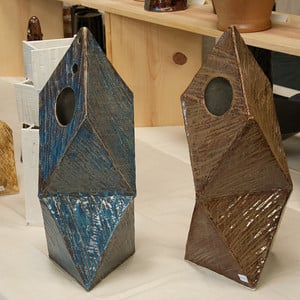
Blue and brown vases
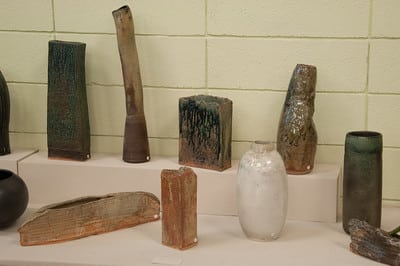
Assorted vases
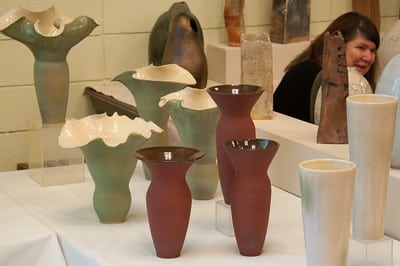
Green and red vases
Subscribe to Bonsai Tonight
New Posts Delivered Every Tuesday and Friday
Barbara Holmes says
Thank you for your beautiful pictures and explanations. It was so informative.
orangepekoereviews says
These photos are great but even with the labels I was stuck telling the difference! What is being used in the third aratame design?
Jonas Dupuich says
Good question about the material – I’m think it’s wire, but am not sure about the details. The artist is Tuan Tran: https://www.facebook.com/pages/WIRE-WEAR-by-Tuan-Tran/169414833071494